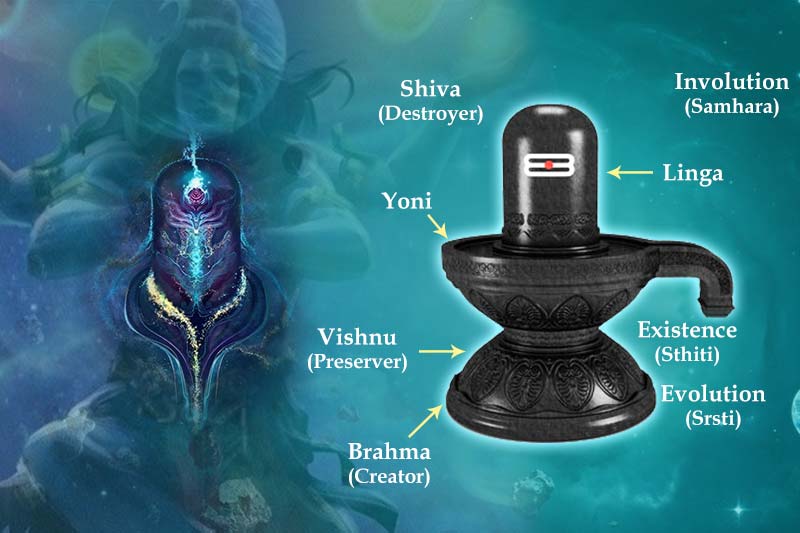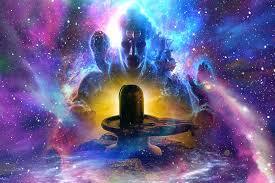The Shivling, or Shiva Lingam, is one of the most ancient and profound symbols in Hinduism. Representing Lord Shiva, the Shivling is worshipped in temples and homes across India and beyond. Over the centuries, it has been described not only as a divine icon but also as a possible source of cosmic energy.
Many devotees believe that the Shivling emits vibrations that align with universal frequencies. But does science support this belief? Can the Shivling really be a conduit of cosmic energy, or is it a spiritual metaphor passed down through mythology?
This blog post embarks on a scientific inquiry to understand the energy theories behind the Shivling, explore architectural alignments in ancient temples, and examine whether there is any measurable or theoretical scientific basis for these age-old claims.
Understanding the Shivling: Symbolism and Structure

Before diving into science, it’s essential to understand what a Shivling represents:
The cylindrical form symbolizes the formless aspect of Shiva, the supreme consciousness.
The base or Yoni represents Shakti, the divine feminine energy.
Together, they form a union of creation and dissolution—the cosmic duality of male and female energy.
This blend of symbolism makes the Shivling more than a religious idol. Many texts—like the Shiva Purana and Linga Purana—describe the lingam as the origin of the universe. In this context, some interpretations claim the Shivling is a manifestation of cosmic energy.
The Spiritual Perspective: Shivling as a Cosmic Generator

According to yogic and Vedic traditions:
The Shivling is considered a tool for channeling spiritual energy.
Meditation around a Shivling is said to stabilize the mind and activate higher chakras.
The structure is believed to absorb and radiate energy, creating a high-vibration zone around it.
Some temples report unusual energy fields where the Shivling is housed, giving rise to speculation that they tap into geomagnetic currents or cosmic frequencies.
Let’s now explore these ideas through a scientific lens.
The Architecture of Temples and Energy Flow

Ancient Hindu temples are not just places of worship—they are designed as energy centers. The Shivling often sits at the Garbhagriha (sanctum sanctorum), built with:
Precise Vastu Shastra principles
Geometrical alignment with magnetic north
Specific construction materials like granite or black basalt, known to have piezoelectric properties
Some scientists propose that these design choices were intentional—to concentrate and radiate subtle energies.
Notable Observations:
Thanjavur Brihadeeswarar Temple houses a huge monolithic Shivling that sits under a massive dome. Some claim that vibrations in the temple align with the Schumann Resonance (7.83 Hz).
Temples like Kailasa Temple (Ellora) are carved from a single rock and reflect remarkable acoustic properties, potentially aiding in resonance.
Material Science and the Shivling: Can It Store Energy?
Shivlings are often made of crystalline stone like quartz, granite, or basalt.
Let’s analyze their properties:
| Material | Scientific Properties | Possible Energy Role |
|---|---|---|
| Quartz | Piezoelectric (generates voltage under pressure) | Could convert mechanical stress into electrical energy |
| Granite | Contains quartz, feldspar | Dense, durable, sometimes magnetic |
| Basalt | Rich in iron and magnesium | Can retain magnetic properties |
These materials can interact with electromagnetic fields, but this doesn’t automatically mean they “emit” energy on their own. Piezoelectricity requires physical pressure or vibration, which is not typically applied in a temple setting.
However, it is possible that chanting, mantras, and ritual movements could create vibrations that activate such materials in small ways.
Sacred Geometry and Resonance
The concept of sacred geometry plays a crucial role in temple design:
The shape of the Shivling (cylinder and sphere) reflects universal patterns seen in black holes, atoms, and even DNA spirals.
The geometry may help in resonating certain frequencies, potentially affecting human consciousness.
In scientific terms:
Resonance occurs when an object naturally vibrates at specific frequencies.
Chanting mantras like “Om” near the Shivling might create constructive interference in the Garbhagriha, enhancing the perceived “energy.”
Could the Shivling be a resonant body, similar to a tuning fork or a singing bowl? Some acoustic studies in temples hint at this, though empirical proof is limited.
Does the Shivling Align with Cosmic Frequencies?
Here’s where science and spirituality intersect:
The Earth’s magnetic field, also known as the geomagnetic field, constantly fluctuates.
Some studies suggest that granite and basalt structures can act as minor conductors or concentrators of these fields.
Electromagnetic anomalies have been recorded in areas like Stonehenge and Machu Picchu, leading some to compare them with Indian temples.
If the Shivling is placed in alignment with geomagnetic ley lines, it might—in theory—interact with Earth’s magnetic field. However, no peer-reviewed study confirms that the Shivling actively generates energy beyond natural material properties.
The Role of Belief, Consciousness, and Energy
Scientific instruments may not currently detect all subtle energies—especially those related to human consciousness.
According to quantum biology and biophoton research, the human body interacts with energy fields. Meditation near a Shivling may:
Lower brainwave frequencies (Alpha, Theta)
Increase mental coherence
Induce a placebo effect that alters perception
Whether this is due to actual “cosmic energy” or the power of belief, the physiological and psychological effects are often real for the practitioner.
What Do Modern Scientists Say?
Most modern physicists and engineers remain cautious about claims of cosmic energy. Their reasons include:
Lack of empirical data or controlled experiments
Absence of repeatable results in energy emission studies
Difficulty in separating spiritual experience from measurable phenomena
However, interdisciplinary fields like neurotheology, quantum consciousness, and acoustic archaeology are beginning to reexamine ancient wisdom with modern tools.
Bridging the Gap: A Balanced View
While hard science may not confirm the Shivling as an energy emitter, it does not disprove its psychological, spiritual, or cultural value.
Shivling as a Multifaceted Symbol:
Spiritual: A meditative tool and symbol of higher consciousness
Architectural: A focal point designed to amplify ambiance and silence
Material: Constructed from stones that interact subtly with energy
Psychological: Induces states of awe, calm, and introspection
In this light, the Shivling might not be a “cosmic generator” in the strictest scientific sense, but it channels energy through the human experience—which is powerful in its own right.
Conclusion: A Meeting of Science and Spirituality
So, is the Shivling a source of cosmic energy? From a purely scientific standpoint, we lack definitive evidence to support that claim in measurable terms. But when viewed through the lenses of geometry, material science, psychology, and spirituality, the Shivling emerges as a powerful symbol and tool that harmonizes the inner and outer worlds.
Whether you’re a devotee, a skeptic, or a seeker, exploring the Shivling as a bridge between ancient knowledge and modern curiosity invites deeper questions about consciousness, reality, and the unseen energies that shape our universe.
FAQs
Q1: Can Shivlings be scientifically proven to emit energy?
There is no peer-reviewed evidence showing that Shivlings emit measurable cosmic energy, but their material and structure can influence surrounding acoustics and vibrations.
Q2: Why is the Shivling mostly made of black stone or granite?
These stones are durable and often have piezoelectric or magnetic properties, possibly influencing their spiritual use.
Q3: Do mantras or rituals around the Shivling have any effect?
Yes. Mantras produce sound vibrations, which can resonate in temple spaces and affect human brainwave states.
Q4: Is belief in the Shivling’s energy just psychological?
Even if primarily psychological, belief can create real physiological and emotional effects, backed by studies in placebo and neuroplasticity.
Related posts:
 The Panchang and Mental Health: Can Cosmic Timing Affect Your Mood?
The Panchang and Mental Health: Can Cosmic Timing Affect Your Mood?
 Hindu Dharma in the Modern Age: Navigating Tradition and Transformation
Hindu Dharma in the Modern Age: Navigating Tradition and Transformation
 Bhadra’s Unique Influence on Raksha Bandhan 2023
Bhadra’s Unique Influence on Raksha Bandhan 2023
 Makar Sankranti: A Festival of Harvest, Tradition, and Joy
Makar Sankranti: A Festival of Harvest, Tradition, and Joy
 Gyanyog: The Spiritual Legacy of Swami Vivekananda
Gyanyog: The Spiritual Legacy of Swami Vivekananda
 Boost Inner Strength and Discipline by Following Hanuman’s Path on Jyeshtha Mangal
Boost Inner Strength and Discipline by Following Hanuman’s Path on Jyeshtha Mangal
